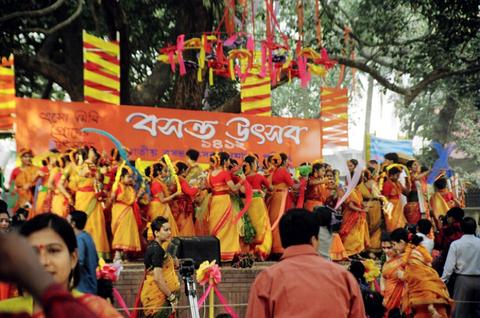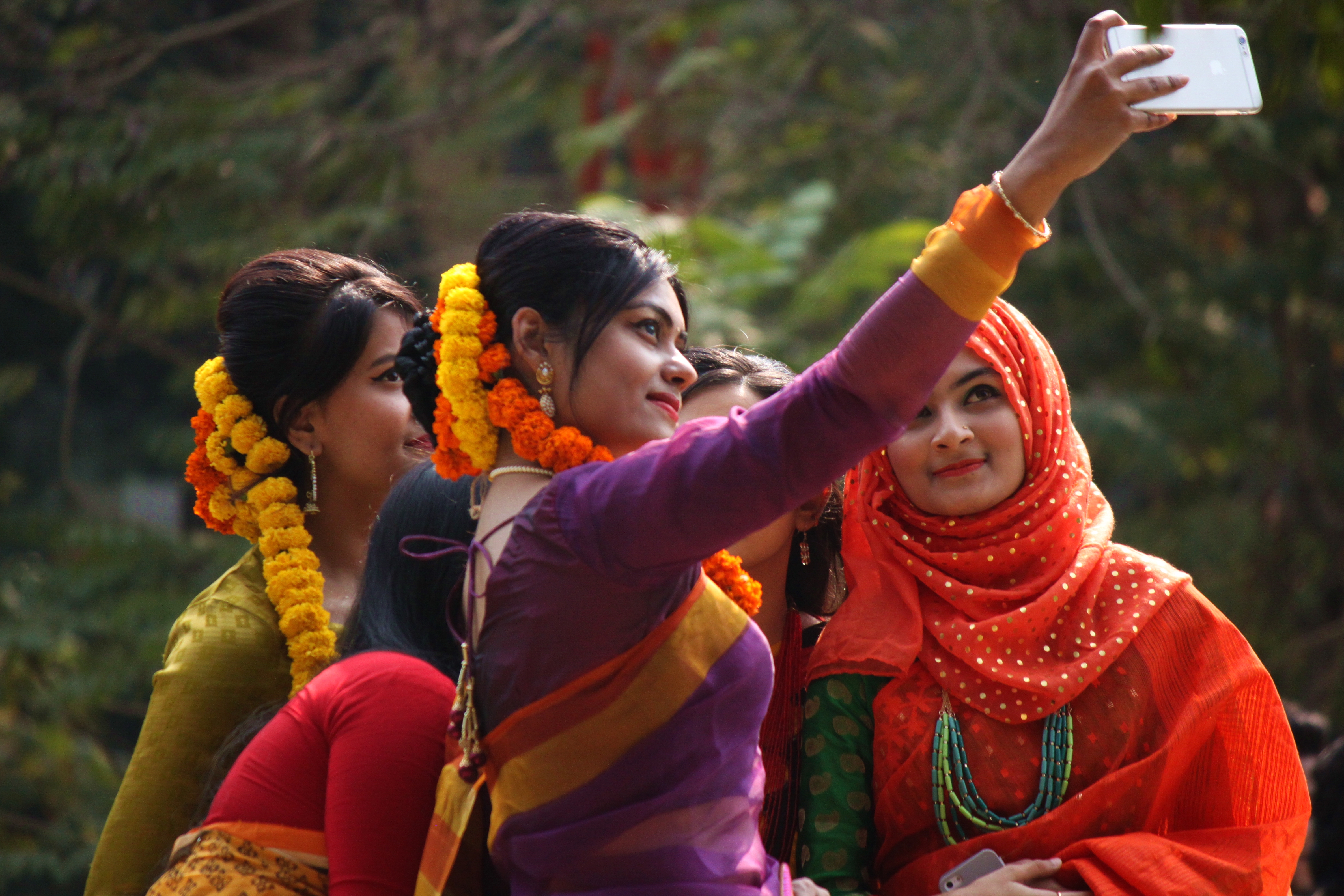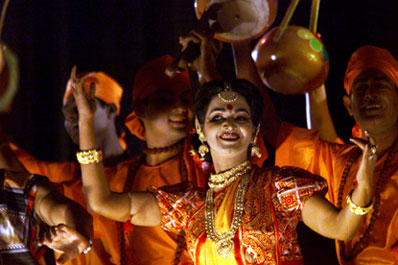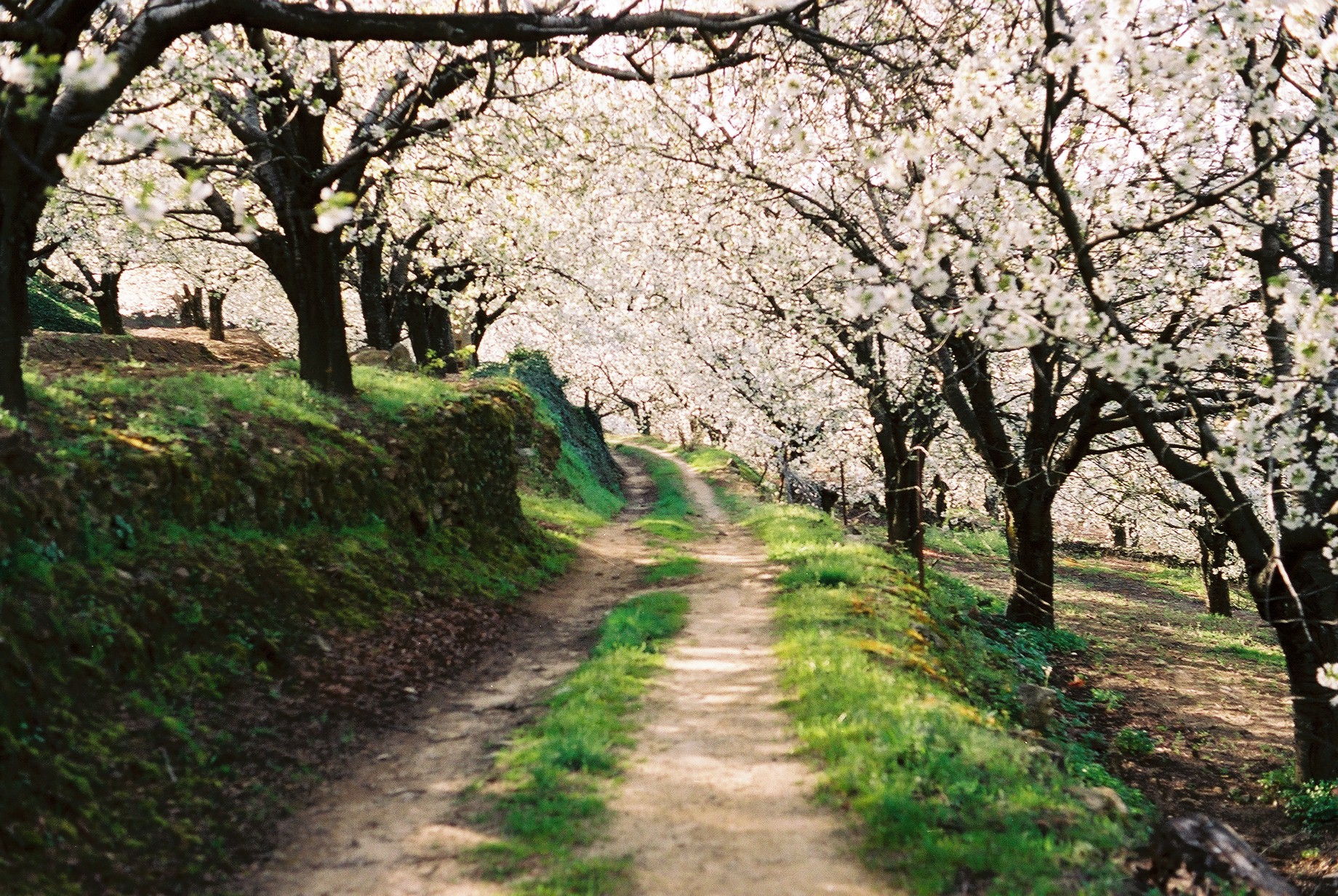|
Falgun
Falgun or Phalgun (; ne, फाल्गुण) or Phagun ( as, ফাগুন) is the eleventh month of the year in the Bengali calendar, the Assamese calendar, and the Nepali calendar. In the revision of the Bengali calendar used in Bangladesh since October 2019, the month has 29 days in common years or 30 in leap years of the Gregorian calendar. In the previous version of the calendar, used in Bangladesh from 1987 through October 2019, Falgun had 30 days in common years or 31 days in leap years. The month has 29 or 30 days, based on the true movements of the Sun, in the old non-reformed Bengali calendar, still used in West Bengal, and in the Nepali calendar. Falgun was named for the ''nakshatra'' ( lunar mansion) ''Uttara phalguni'', in the vicinity of which the full moon appears at that time of the year. It marks the arrival of spring, the sixth and final season in Bangladesh, West Bengal, Assam, and Nepal. Falgun falls between mid-February and mid-March on the Gregoria ... [...More Info...] [...Related Items...] OR: [Wikipedia] [Google] [Baidu] |
Pahela Falgun
Pohela Falgun ( bn, পহেলা ফাল্গুন, ''Pôhela Falgun'' or পয়লা ফাল্গুন, ''Pôela Falgun''), also known as the first day of Spring of the Bengali month Falgun, is a festival celebrated in Bangladesh. The celebration was started in 1991 by students of Dhaka University's Faculty of Fine Arts. The first of Falgun usually falls on 13 February of the Gregorian Calendar. However, due to changes to the Bangla calendar, from 2020 onwards Pohela Falgun is celebrated on February 14 instead of February 13. The festival in Bangladesh also celebrated as ''Basanta Utsab'' ( bn, বসন্ত উৎসব ; ''Spring Festival''), Names In Bengali, Pohela stands for 'first' and 'Falgun' or Fagun''' is the eleventh month of the Bengali calendar. See also * Pahela Baishakh * Culture of Bangladesh * Festivals of Bangladesh * Culture of Nepal * Festivals of West Bengal West Bengal celebrates many holidays and festivals. The Bengali proverb “ ... [...More Info...] [...Related Items...] OR: [Wikipedia] [Google] [Baidu] |
Pohela Falgun
Pohela Falgun ( bn, পহেলা ফাল্গুন, ''Pôhela Falgun'' or পয়লা ফাল্গুন, ''Pôela Falgun''), also known as the first day of Spring of the Bengali month Falgun, is a festival celebrated in Bangladesh. The celebration was started in 1991 by students of Dhaka University's Faculty of Fine Arts. The first of Falgun usually falls on 13 February of the Gregorian Calendar. However, due to changes to the Bangla calendar, from 2020 onwards Pohela Falgun is celebrated on February 14 instead of February 13. The festival in Bangladesh also celebrated as ''Basanta Utsab'' ( bn, বসন্ত উৎসব ; ''Spring Festival''), Names In Bengali, Pohela stands for 'first' and 'Falgun' or Fagun''' is the eleventh month of the Bengali calendar. See also * Pahela Baishakh * Culture of Bangladesh * Festivals of Bangladesh * Culture of Nepal * Festivals of West Bengal West Bengal celebrates many holidays and festivals. The Bengali proverb “ ... [...More Info...] [...Related Items...] OR: [Wikipedia] [Google] [Baidu] |
Bengali Calendar
The Bengali Calendar or Bangla Calendar ( bn, বঙ্গাব্দ , , Baṅgābda), colloquially ( bn, বাংলা সন, Baṅgla Śon), is a solar calendar used in the Bengal region of the Indian subcontinent. A revised version of the calendar is the national and official calendar in Bangladesh and an earlier version of the calendar is followed in the Indian states of West Bengal, Tripura and Assam. The New Year in the Bengali calendar is known as '' Pohela Boishakh''. The Bengali era is called ''Bengali Sambat'' (BS) or the ''Bengali year'' ( ''Bangla Sôn'', ''Bangla sal'', or ''Bangabda'') has a zero year that starts in 593/594 CE. It is 594 less than the AD or CE year in the Gregorian calendar if it is before ''Pôhela Bôishakh'', or 593 less if after ''Pôhela Bôishakh''. The revised version of the Bengali calendar was officially adopted in Bangladesh in 1987. Among the Bengali community in India, the traditional Indian Hindu calendar continues to ... [...More Info...] [...Related Items...] OR: [Wikipedia] [Google] [Baidu] |
Bangla Calendar
The Bengali Calendar or Bangla Calendar ( bn, বঙ্গাব্দ , , Baṅgābda), colloquially ( bn, বাংলা সন, Baṅgla Śon), is a solar calendar used in the Bengal region of the Indian subcontinent. A revised version of the calendar is the national and official calendar in Bangladesh and an earlier version of the calendar is followed in the Indian states of West Bengal, Tripura and Assam. The New Year in the Bengali calendar is known as '' Pohela Boishakh''. The Bengali era is called ''Bengali Sambat'' (BS) or the ''Bengali year'' ( ''Bangla Sôn'', ''Bangla sal'', or ''Bangabda'') has a zero year that starts in 593/594 CE. It is 594 less than the AD or CE year in the Gregorian calendar if it is before ''Pôhela Bôishakh'', or 593 less if after ''Pôhela Bôishakh''. The revised version of the Bengali calendar was officially adopted in Bangladesh in 1987. Among the Bengali community in India, the traditional Indian Hindu calendar continues to ... [...More Info...] [...Related Items...] OR: [Wikipedia] [Google] [Baidu] |
Magh (Bengali Calendar)
Magh ( bn, মাঘ) is the tenth month in the Bengali calendar. This is the last month of the two months of winter season. Etymology This month is named after the star Magha ( ''Môgha''). Festivals * ''Maghi Purnima'', a Buddhist festival on the full moon night of this month * ''Suryavrata'', a vrata observed by Hindu women usually who are unmarried, on the first day of this month * '' Saraswati puja'', Hindu festival in honor of goddess Saraswati Saraswati ( sa, सरस्वती, ) is the Hindu goddess of knowledge, music, art, speech, wisdom, and learning. She is one of the Tridevi, along with the goddesses Lakshmi and Parvati. The earliest known mention of Saraswati as a ... observed on the fifth lunar day in this month, popular in Bangladesh, and Assam and West Bengal states of India. Observances * Suryavrata - Magh 1 * Republic Day of India and Australia Day - Magh 12 (India), Magh 11 (Bangladesh) * Super Bowl Sunday - Fourth Sunday of Magh Refe ... [...More Info...] [...Related Items...] OR: [Wikipedia] [Google] [Baidu] |
Culture Of Bangladesh
The culture of Bangladesh is intertwined with the culture of the '' Bengal region'' of the Indian subcontinent. It has evolved over the centuries and encompasses the cultural diversity of several social groups of Bangladesh. The Bengal Renaissance of the 18th early 19th centuries, noted Bengali writers, saints, authors, scientists, researchers, thinkers, music composers, painters, film-makers have played a significant role in the development of Bengali culture. The Bengal Renaissance contained the seeds of a nascent political Indian nationalism which was the precursor in many ways to modern Indian artistic cultural expression. According to M. Nazrul Islam Tamij, a human rights activist and chairman of the National Human Rights Society (NHRS), human rights are the most important part of Bengali culture, and it plays an important role in the development of Bengali culture. The cultures of Bangladesh composite over the centuries have assimilated influences of Islam, Hinduism ... [...More Info...] [...Related Items...] OR: [Wikipedia] [Google] [Baidu] |
Bikram Sambat
Vikram Samvat ( IAST: ''Vikrama Samvat''; abbreviated VS) or Bikram Sambat B.S. and also known as the Vikrami calendar, is a Hindu calendar historically used in the Indian subcontinent. Vikram Samvat is generally 57 years ahead of Gregorian Calendar, except during January to April, when it is ahead by 56 years. Alongside Nepal Sambat, it is one of the two official calendars used in Nepal. In India, it is used in several states. The traditional Vikram Samvat calendar, as used in India, uses lunar months and solar sidereal years. The Nepali Bikram Sambat introduced in 1901 CE, also uses a solar sidereal year. History A number of ancient and medieval inscriptions used the Vikram Samvat. Although it was reportedly named after the legendary king Vikramaditya, the term "Vikrama Samvat" does not appear in the historical record before the 9th century; the same calendar system is found with other names, such as Krita and Malava. In colonial scholarship, the era was believed to be b ... [...More Info...] [...Related Items...] OR: [Wikipedia] [Google] [Baidu] |
Holi
Holi (), also known as the Festival of Colours, the Festival of Spring, and the Festival of Love,The New Oxford Dictionary of English (1998) p. 874 "Holi /'həʊli:/ noun a Hindu spring festival ...". is an ancient Hindu religious festival and one of the most popular festivals in Hinduism. It celebrates the eternal and divine love of Radha Krishna. The day also signifies the triumph of good over evil, as it commemorates the victory of Lord Vishnu as Narasimha Narayana over Hiranyakashipu. It originated and is predominantly celebrated in the Indian subcontinent but has also spread to other regions of Asia and parts of the Western world through the Indian diaspora.Ebeling, Karin (10), Holi, an Indian Festival, and its Reflection in English Media; Die Ordnung des Standard und die Differenzierung der Diskurse: Akten des 41. Linguistischen Kolloquiums in Mannheim 2006, 1, 107, [...More Info...] [...Related Items...] OR: [Wikipedia] [Google] [Baidu] |
Choitro
Choitro ( bn, চৈত্র) is the last month of the Bengali calendar. It falls from mid-March to mid-April and is the last month of Spring ( bn, বসন্ত ''Bôsôntô''). The name of the month is derived from the star Chitra ( ''Chitra''). Culture Traditionally this month is famous for what is called the "Choitro Sale" () when all shopping prices fall discounted (sale) all throughout the month. It is traditionally done in order to sell away all remaining products by the end of year, so that the Haal Khata (), the new account book can be opened on the New Year's Day. Choitro Sankranti is observed in the last day of the month and the last day of the Bengali Calendar. It is celebrated more in rural areas than in urban areas, where it has celebrated for hundreds of years. It is the day before Pohela Boishakh and it more popular than Pohela Boishakh in rural areas. Observances * Choitro 12 - Independence Day (Bangladesh) * Chotiro 30 - Choitro Sankranti * Thursday o ... [...More Info...] [...Related Items...] OR: [Wikipedia] [Google] [Baidu] |
Spring (season)
Spring, also known as springtime, is one of the four temperate In geography, the temperate climates of Earth occur in the middle latitudes (23.5° to 66.5° N/S of Equator), which span between the tropics and the polar regions of Earth. These zones generally have wider temperature ranges throughout t ... seasons, succeeding winter and preceding summer. There are various technical definitions of spring, but local usage of the term varies according to local climate, cultures and customs. When it is spring in the Northern Hemisphere, it is autumn in the Southern Hemisphere and vice versa. At the spring (or vernal) equinox, Daytime (astronomy), days and nights are approximately twelve hours long, with daytime length increasing and nighttime length decreasing as the season progresses until the Summer Solstice in June (Northern Hemisphere) and December (Southern Hemisphere). Spring and "springtime" refer to the season, and also to ideas of rebirth, rejuvenation, renewal, ... [...More Info...] [...Related Items...] OR: [Wikipedia] [Google] [Baidu] |
Dol Yatra
Dol Purnima, Dol Jatra, Doul Utsav or Deul is a major Holi festival of Braj, Bangladesh and the Indian state of West Bengal, Odisha and Assam. This festival is dedicated to Sri Krishna and Radha. It is mainly celebrated by Gopal community of Odisha. On this auspicious day, a deity of Krishna and his beloved Radha, richly adorned and besmeared with colored powder (Abir. In Brajvasi, Bengali, Odia and Assamese, is taken out in procession in a swinging palanquin, decorated with flowers, leaves, colored clothes and papers. The procession proceeds forward to the accompaniment of music, blaring of conch shells, trumpets made from water buffalo horn and shouts of 'Joy' (Victory) and 'Hôri Bolo' in Odisha. Odia women wash their courtyards with cowdung and decorate with rice powder and flowers. Milk items like home made curd, cream, butter and 'panchamrit' are offered. The people who accompany are offered sweets and drinks. In villages, drinks made of curd are distributed among people and ... [...More Info...] [...Related Items...] OR: [Wikipedia] [Google] [Baidu] |
Maha Shivaratri
Maha Shivaratri ( IAST: Mahāśivarātri) is a Hindu festival celebrated annually in honour of the god Shiva. The name also refers to the night when Shiva performs the heavenly dance called Tandava. In every month of the luni-solar Hindu calendar, there is a ''Shivaratri'' – "night of Shiva" – on the day before new moon. But once a year, in late winter and before the arrival of Summer (February/March), this night is called "Maha Shivaratri" – "the Great Night of Shiva". This day falls in the month of Phalguna as per the North Indian Hindu calendar and in Magha as per the South Indian Hindu calendar (see Amanta and Purnimanta systems). It is a notable festival in Hinduism, and this festival is solemn and marks a remembrance of "overcoming darkness and ignorance" in life and the world. It is observed by remembering Shiva and chanting prayers, fasting, and meditating on ethics and virtues such as honesty, non-injury to others, charity, forgiveness, and the discovery ... [...More Info...] [...Related Items...] OR: [Wikipedia] [Google] [Baidu] |









.jpg)